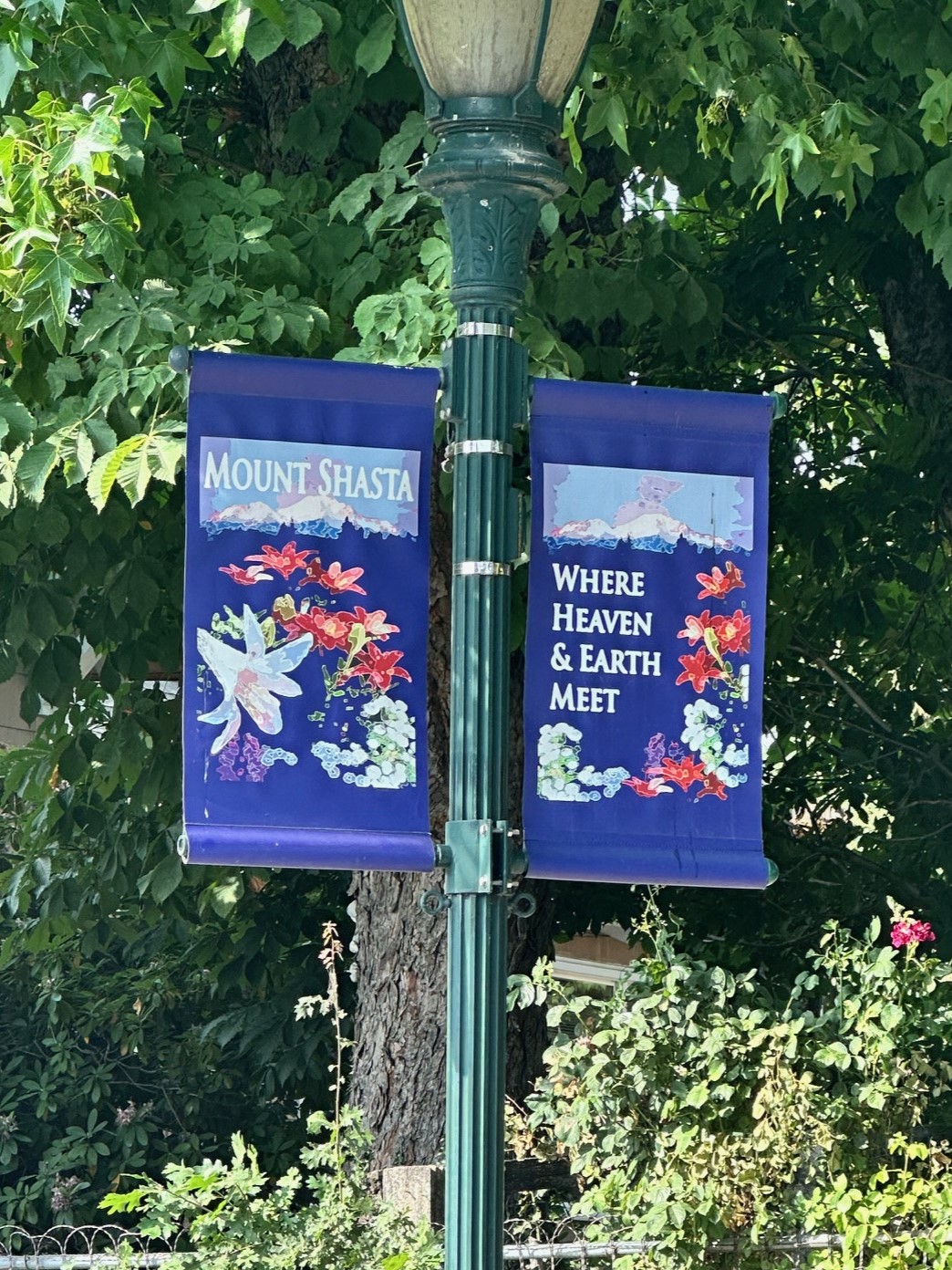
For years, I’ve been meeting with a group of five other men most Tuesday mornings at 7 AM. This practice was modeled for me by my friend Jody, a pastor in Oxford. We even did a podcast on the subject if you want to learn more about building your own community. The only agenda for our meetings is to share our life stories as they unfold in real-time. Several of us attend church together, and recently, we all joined the same gym—although some of us are more regular attendees than others.
During the holidays last year, one of our group members, Matt G., suggested we sign up to do something challenging together. He remembered when Jas and I talked about seeing Mount Shasta after returning from a retreat in Northern California with our older children, and he thought it might be a great bonding experience to attempt to summit the mountain as a group.
We all naively agreed.
We began training and gathering gear right away. Jas, by far the most experienced outdoorsman among us, found local spots for us to break in our newly purchased hiking boots. During the week, we carried weight on our neighborhood walking trails, and on the weekends, we hiked paths adjacent to the Natchez Trace and at the mountain bike track in Ridgeland. We also did individual work at the gym, including swimming, stair climbing, weightlifting, yoga, and TriBathalon experiences. Slowly but surely, we got in shape as the anticipation of the adventure grew. I personally learned hard lessons about hydration and caloric intake, experiencing a significant “bonk” on the Yockanookany trail about two months before the trip. Our go-to nutrition was Smucker’s Uncrustables. They were pretty good at first, but I doubt I will ever eat another one again.
From the airport in Sacramento, we traveled up Interstate 5, witnessing wildfires blazing to our east in Chico, California. The fires had grown to more than 350,000 acres, making them the seventh-largest wildfire in recorded California history. For perspective, the fire was larger than the city of Los Angeles and was only 10% contained during the week of our trip. The plume of smoke looked like a nuclear explosion from a distance, but thankfully, it had little impact on our journey other than creating unique views from elevation. Eventually, we saw Mount Shasta, her gray and white head poking up from the evergreen trees that rose on either side of the interstate. She stood alone in my memory, though there are other peaks in the surrounding area, quite small in comparison.
Mount Shasta is a potentially active volcano at the southern end of the Cascade Range. At an elevation of 14,179 feet, the mountain and surrounding area are part of the Shasta–Trinity National Forest. The guides we hired suggested we take the Clear Creek Route, which is considered “hard” by AllTrails. The town itself is very small, with a population of just over 3,200 people. According to Mount Shasta Sightings, a 2012 book by Brian Wallenstein, Mount Shasta ranks 13th out of 300 for UFO sighting hot spots. The place is steeped in mythology and mysticism, drawing interest from various spiritual, cultural, and paranormal communities. You may be familiar with Bethel Church located in nearby Redding.
One of the most enduring myths is that the mountain is home to the ancient, hidden city of Telos, believed to be inhabited by Lemurians, a race of advanced beings from the lost continent of Lemuria. According to legend, these tall, ghostly beings live in a vast network of tunnels within the mountain, possessing powers of telepathy and advanced technology. Mount Shasta is often a site of unexplained phenomena, further fueling its reputation as a vortex of spiritual energy and a portal to other dimensions. Think Stonehenge. These myths have made Mount Shasta a magnet for seekers of the supernatural and the esoteric, adding layers of mystery to its already majestic presence.
We didn’t know any of this when we signed on, but it made for interesting people-watching. We experienced this magnet for spiritual seekers firsthand, as around every corner, we witnessed interesting people dressed in unusual costumes, like something from Disney and Star Wars movies. Stanton even had a strange energy standoff at a coffee shop with a local. She was either impacted by Stanton’s positive life aura or overwhelmed by the enthusiasm of the tallest member of our group. Come to think of it, maybe she thought Stanton, who stands about 6’5”, was a Lemurian in disguise, Ole Miss hat and all. You may remember Stanton from Cancer and the Farm.
We met our leaders from SWS Mountain Guides at their office on Saturday and sorted out our gear. I quickly realized I had brought too much stuff, and I learned that trekking, at any level of difficulty, requires a delicate balance of having the right gear, hydration, and nutrition while staying warm and conserving energy. Fully packed, my backpack weighed in at a little under 43 pounds—way too heavy in retrospect. We snapped a few pictures in town and headed to the mountain, confident we would be taking another group shot from the summit.
On the first day, we ascended from the trailhead about 4 miles and 2,500 feet. Our guides, Hans and Colin, were professional mountain athletes. Hans, in particular, was exceptional. These young men lived in their vans when they weren’t in the outdoors, gliding up the mountain like Michael Jackson performing an effortless moonwalk over rocks and roots. I never saw them out of breath, which I can’t say for myself and my travel companions. We were mostly destroyed by the time we made it to base camp at 8,500 feet to set up our tents, but our spirits were lifted by the incredible natural springs that flow from the mountain, with its unusual flowers and grasses only appearing a few weeks of the year in a tiny area around the pristine Lemurian waters.
No filter needed.
We wore long-sleeve hoodies and hid from the sun behind rocks as best we could that afternoon, making fun of each other’s feet like a pack of sixth graders. Stanton gathered intelligence from those he encountered who were on their way down the hill. After a meal of dehydrated rice and chicken, we retreated to our tents for some rest before our midnight wake-up. I might have slept only 30 minutes, and I made sure Brad and Matt G. got limited rest too, often calling to them from the yellow tent I shared with Jas nearby. Around 1:15 AM, we started our summit attempt, looking like a band of coal miners in our helmets and headlamps. The stars were inspiring but difficult to view, as they were behind us, and we had to concentrate on our feet to navigate the winding, scree-laden switchbacks in the dark. Every ninety minutes or so, we would stop to eat and hydrate, pulling out heavy jackets from our packs and throwing them over us like NFL players on a Sunday in Green Bay in January. At about 11,000 feet, Stanton started to cramp, followed by Brad. At this elevation, your lungs are only getting about 70% of the oxygen you enjoy in the flatlands of Mississippi. If your movements are inefficient, your energy level can quickly drop. By 12,000 feet, it became evident that the entire group was not going to make it, and Hans and Colin had several difficult conversations with us about our present reality.
“To summit is something, but it’s not everything,” explained our young guide, Hans, as the sun began to rise over the smaller peaks, which seemed to float below the horizon, basking in the smoke from the Chico fire, where heaven and earth meet. The decision was made that Stanton and Brad would turn around with Colin. Matt G. was feeling great, but as the trip was his idea, he sacrificially volunteered to go down with our friends who were experiencing the worst the altitude was dishing out.
This left me, Jas, and Matt S. to carry the baton for the rest of the team, with Hans leading the way. Now with the fate of the entire mission in our hands, we pushed for the top. But by 13,000 feet, Matt S., likely the fittest member of our group who had recently completed the St. Jude Marathon in Memphis in a respectable time, began to feel the effects of altitude and started to fall behind. Jas, a leader of men, dropped back to walk behind him and offer words of encouragement as his energy decreased while nausea simultaneously increased. He had earlier experienced a bathroom break “incident,” which I’m sure he will tell you about if you ask. Hans suggested we stop and regroup. We briefly discussed leaving Matt S. next to a rock while Jas and I made the summit attempt, but Hans explained that the path down was a different route, and Matt S. was too impaired by the altitude to leave alone. It wasn’t until we analyzed our trek later that we realized he should have traded places with the other Matt.
At 13,200 feet, our climb was over.
The descent was difficult for me, but Jas was flying down the hill like a rabbit moving through a thicket. Once we descended a thousand feet or so, Matt S. started feeling better too, and I became the one dragging up the rear. I pulled the hose of my Camelback to my mouth, and nothing came out. I assumed there was a kink in the line, but I was too tired and too disappointed to stop and untangle it. I didn’t realize until I crash-landed at base camp that I was completely out of water. Had we continued to push to the summit, I might have made it, but I would have been dangerously dehydrated, making an already difficult descent next to impossible with my very limited mountaineering skills. My disappointment quickly turned to gratitude, realizing that the series of events that unfolded were a blessing.
Isn’t life funny like that?
When we returned to civilization, we indulged in red Cokes, dairy bar hamburgers and fries, and a box of popsicles that, as a frozen treat connoisseur, I can say were probably the best of my fifty years on earth. We laughed and reminisced over every moment spent on Shasta’s slopes before taking well-deserved naps at our Airbnb. The next day, we treated ourselves to massages enhanced by aromatherapy from a Reiki healer who taught me about the seven chakras. We also experienced sound healing with alchemy crystal bowls accompanied by violin at Crystal Tones.
On the last night of the trip, we shared local wine and enjoyed a family-style steak dinner, taking turns to share our highs, lows, and funniest moments of the outing. There was laughter, there were tears, and there was profound respect for the majesty of Mount Shasta.
“Where heaven and earth meet” isn’t just the town motto for Mount Shasta, California—it’s a state of being, as fleeting as the flowers and grasses nourished by the Lemurian spring waters on the mountain itself. For the girl in the coffee shop, maybe it was her encounter with Stanton. For others, it might be the whale-like singing of alchemy crystal bowls or the energy emitted from one’s crown chakra during a certain moon phase or astrological event. But for Christians like me, it is the embodiment of God through Jesus Christ, who walked the earth with a group of men in community—just like our little crew, both before and after Mount Shasta chewed us up and spit us out. As the young and wise Hans told us at about 12,000 feet when we had to separate, “The summit is something, but not everything.” It’s the journey that matters. As spiritual beings having human experiences in community, this journey is as close to heaven on earth as we will get on this side of eternity.
I don’t know if I’ll ever find myself on the switchbacks of Mount Shasta again, but the journey with my men’s community was exactly what it was supposed to be—nothing more, nothing less. I will be doing it for the rest of my life. I challenge you to see your experiences in the same way, because life is simply better when shared with others.
Craig Robertson is the founder of Robertson + Easterling. For over 25 years, he has practiced exclusively high net worth divorce and complicated family law in Mississippi. He sees his role as extending beyond legal guidance to encompass the support of clients through the intricate and challenging landscape of emotions that accompany divorce –promoting health and wellness practices. He provides compassionate and empathetic assistance for those who need to navigate the path of healing.





